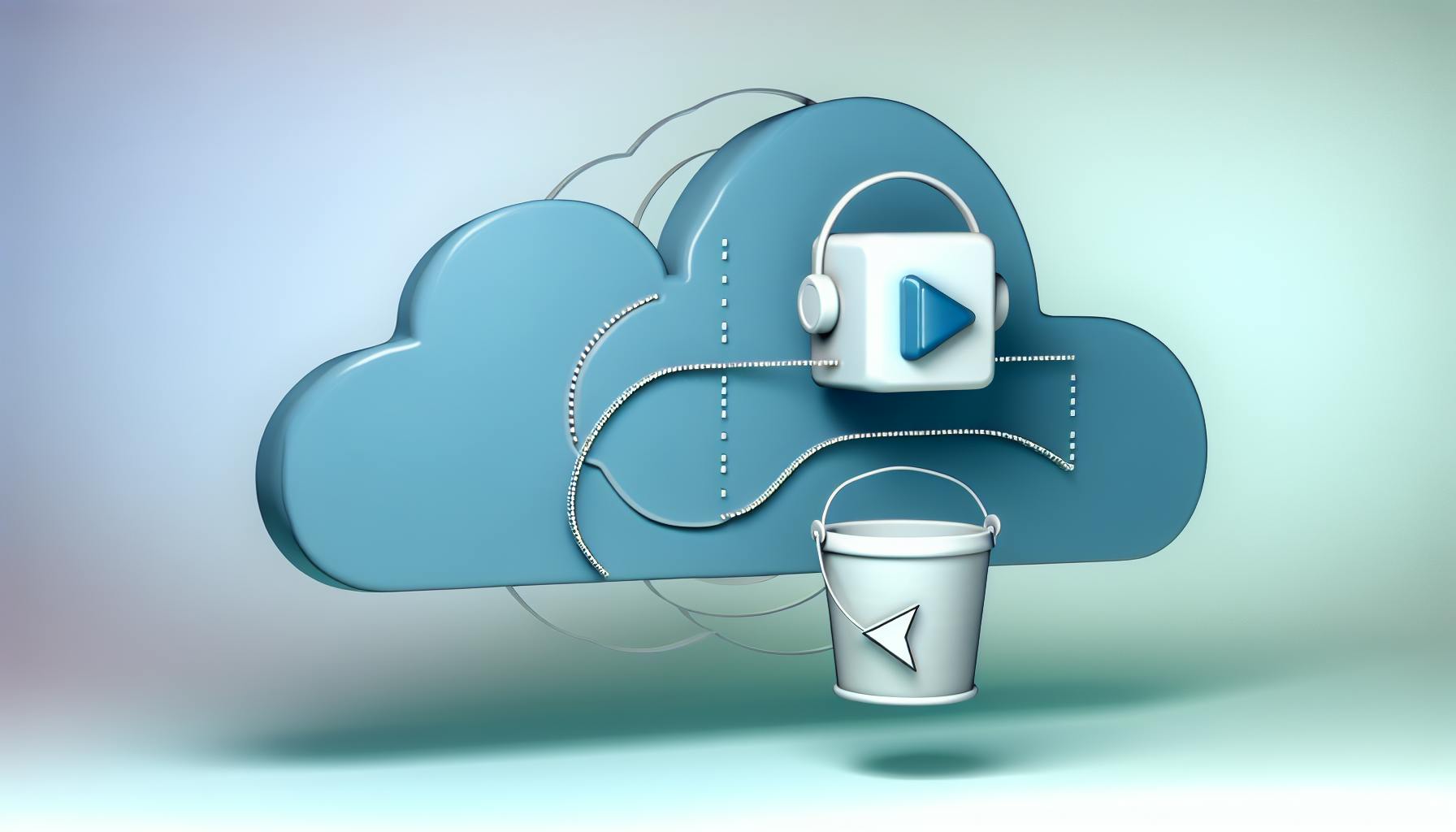Want to optimize your AWS Lambda functions? Start by understanding the key metrics that impact performance, cost, and scalability.
AWS Lambda is a serverless compute service that automatically manages infrastructure, allowing you to focus on your code. Monitoring Lambda metrics is essential to ensure smooth operations, reduce costs, and fix issues before they disrupt users. Here's what you need to know:
-
Key Metrics to Track:
- Performance: Duration, Billed Duration, Memory Size, Max Memory Used
- Concurrency: ConcurrentExecutions, Throttles
- Cost: Invocations, Provisioned Concurrency Utilization
- Reliability: Errors, Dead Letter Queue usage
-
Tools for Monitoring:
- Amazon CloudWatch: Tracks basic metrics, offers dashboards and alerts.
- AWS X-Ray: Provides tracing for detailed performance insights.
- Third-Party Tools: Datadog, New Relic, Lumigo, and OpenTelemetry for advanced monitoring.
-
Optimization Tips:
- Use Lambda Power Tuning to balance memory and execution time.
- Reduce cold starts with provisioned concurrency and smaller package sizes.
- Set CloudWatch alarms for critical thresholds like error rates and concurrency limits.
Key Lambda Metrics
Monitoring AWS Lambda functions requires attention to specific metrics that can help you assess and enhance their performance. Here's a breakdown of the most important ones.
Performance Measurements
Two essential performance metrics to track are Duration and memory allocation. Duration reflects how long your function takes to execute, while memory metrics indicate how much memory is allocated versus how much is actually used.
| Metric | Description | Optimization Goal |
|---|---|---|
| Duration | Time taken to process in milliseconds | Reduce execution time |
| Billed Duration | Rounded-up time used for billing | Minimize costs |
| Memory Size | Allocated memory in MB | Right-size allocation |
| Max Memory Used | Peak memory consumption | Optimize resource usage |
| Errors | Number of failed executions | Lower error rate |
AWS Lambda sends these metrics to Amazon CloudWatch at 1-minute intervals. Next, let's look at concurrency metrics, which provide insights into handling multiple requests at once.
Concurrency Stats
Concurrency metrics reveal how well your functions manage simultaneous executions. By default, AWS sets a concurrency limit of 1,000 executions per region, though this can be adjusted if needed.
The ConcurrentExecutions metric shows the number of instances processing events at the same time. AWS Lambda can provision up to 6,000 execution environments per minute, regardless of region.
Here's the formula to calculate concurrency:
Concurrency = (average requests per second) × (average request duration in seconds)
Cost Indicators
AWS Lambda costs are closely tied to three main metrics:
- Invocations: Tracks the total number of function calls. AWS offers one million free requests per month under its free tier.
- Duration-Based Costs: Costs depend on factors like memory allocation and processor type. Graviton2 processors, for example, can provide up to 34% better price performance compared to x86 processors.
- Provisioned Concurrency Utilization: Measures how efficiently pre-warmed function instances are utilized, allowing you to balance performance with cost.
Monitoring Tools
To manage AWS Lambda effectively, it's important to explore the available monitoring tools after identifying key metrics.
Using Amazon CloudWatch

Amazon CloudWatch is AWS's built-in monitoring service for Lambda. It automatically gathers metrics every minute, covering the basics you’ll need for tracking performance.
Here’s what CloudWatch brings to the table:
| Feature | Description |
|---|---|
| Basic Metrics | Monitors invocations, errors, and execution duration |
| Dashboards | Offers visualizations and graphs for better insights |
| Filters | Allows custom metrics based on log patterns |
| High-Resolution Metrics | Collects metrics at intervals shorter than a minute |
For better control, set up alerts for the ConcurrentExecutions metric when it reaches about 80% of your regional concurrency limit. While CloudWatch provides a solid foundation, you might need additional tools for more detailed insights.
Working with AWS X-Ray

AWS X-Ray complements CloudWatch by adding tracing capabilities. It helps map out how requests flow through your application, making it easier to spot performance issues.
To enable X-Ray for your Lambda functions:
- Activate X-Ray in the Lambda console.
- Attach the AWSXRayDaemonWriteAccess policy to your function's role.
- Use the X-Ray SDK to instrument your code.
Each trace includes two segments: one for the Lambda service and one for the specific function execution. This level of detail can be crucial for diagnosing bottlenecks in distributed systems.
External Monitoring Tools
If AWS's native tools don’t meet all your needs, third-party solutions can provide additional features and flexibility:
| Tool | Key Features |
|---|---|
| Datadog | Tracks function performance and cold starts |
| New Relic | Monitors performance in real time |
| Lumigo | Offers visual debugging and cold start detection |
| OpenTelemetry | Provides a framework for distributed tracing |
For example, Helios integrates with OpenTelemetry and Webpack to deliver comprehensive monitoring across your application.
When choosing a tool, balance your feature needs with budget considerations. CloudWatch’s pay-as-you-go pricing is straightforward but can become costly for large-scale operations. Open-source options like OpenTelemetry, on the other hand, offer robust monitoring at a lower cost.
sbb-itb-6210c22
Monitoring Guidelines
To ensure consistent Lambda performance, it's essential to establish clear monitoring practices. Use the metrics and tools discussed earlier to set actionable thresholds and fine-tune your functions effectively.
Alert Configuration
Set up Amazon CloudWatch alarms to catch issues before they disrupt your application. Pay close attention to metrics like error rate, duration, memory usage, and throttling events. Here's why these metrics matter:
| Metric Type | What to Watch For | Why It Matters |
|---|---|---|
| Error Rate | Higher-than-normal levels | Indicates code or configuration problems |
| Duration | Long runtimes near timeout | Helps prevent function timeouts |
| Memory Usage | Usage close to allocated limit | Avoids memory-related failures |
| Throttles | Any occurrence | Highlights potential concurrency bottlenecks |
CloudWatch's one-minute monitoring interval ensures near real-time alerts, helping you stay ahead of potential problems.
Performance Tuning
Optimizing Lambda performance often involves focusing on runtime efficiency and cost management. Python and Node.js generally have quicker cold starts than Java, making them a preferred choice for latency-sensitive tasks. Here's how to fine-tune your functions:
-
Memory Optimization
- Use Lambda Power Tuning to adjust memory allocation for better performance.
- Reduce cold start times by enabling provisioned concurrency, using Lambda SnapStart for Java, pooling database connections, and trimming unnecessary package dependencies.
- Cut costs by limiting log metadata to avoid excessive data overhead.
-
Cold Start Management
- Enable provisioned concurrency for essential functions.
- Utilize Lambda SnapStart for Java workloads to improve startup times.
- Minimize package size by removing unused libraries and dependencies.
-
Cost Efficiency
- Keep an eye on CloudWatch metrics to manage expenses. Remember, each log entry generates around 70 bytes of metadata. Use structured logging to maintain clarity without excessive data.
These tuning strategies can help you avoid common performance pitfalls and keep your functions running smoothly.
Common Problems and Solutions
Lambda metrics often highlight recurring issues. Here's how to address them:
Memory and Timeout Issues
- Analyze duration trends and adjust timeouts as needed.
- Use AWS Lambda Power Tuning to find the right balance for memory allocation.
Concurrency Problems
- Set appropriate concurrency limits.
- Use reserved concurrency for critical functions to guarantee availability.
- Monitor throttling events using CloudWatch.
Error Handling
- Implement detailed error logging for better debugging.
- Configure Dead Letter Queues (DLQs) to handle failed events.
- Set up alerts to track DLQ usage.
For VPC-connected functions, using VPC endpoints for AWS services can help reduce latency while maintaining security. This practice ensures better performance and reliability.
Summary
Explore key metrics and actionable steps to keep your serverless applications running smoothly.
Key Metrics to Monitor
Here’s a quick look at some important Lambda metrics to keep an eye on:
| Metric Category | Key Metrics | Purpose |
|---|---|---|
| Performance | Duration | Measure function runtime |
| Reliability | Errors | Spot and troubleshoot issues |
| Scaling | ConcurrentExecutions, Throttles | Manage scaling and limits |
| Cost | Invocations, ProvisionedConcurrencyUtilization | Monitor and control expenses |
Amazon CloudWatch gathers these metrics every minute, giving you near real-time insights into your Lambda functions. These data points can help you identify trends and make informed decisions.
Next Steps for Effective Monitoring
Take these steps to enhance your Lambda monitoring setup:
-
Set Up CloudWatch Dashboards
- Build custom dashboards to focus on critical metrics.
- Group related metrics for easier analysis.
- Create separate views for development and production environments.
-
Establish Baseline Metrics
- Observe function behavior during normal operations.
- Record expected metric ranges for reference.
- Use these baselines to define meaningful alert thresholds.
-
Develop a Monitoring Plan
- Start with key metrics like Duration, Errors, and ConcurrentExecutions.
- Configure CloudWatch alarms for critical thresholds.
- Enable detailed monitoring for high-priority functions.


